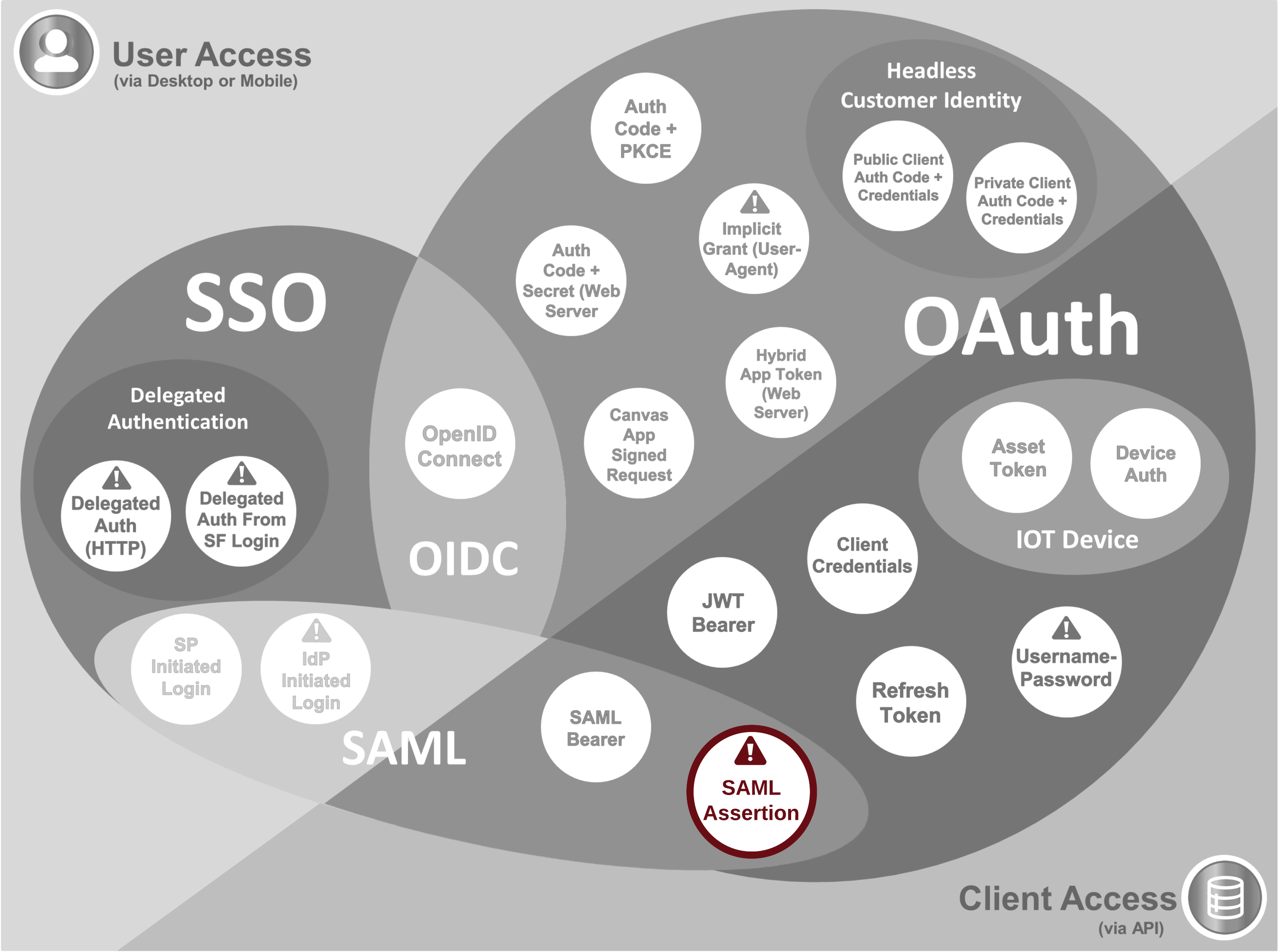
- This flow makes use of a Single Sign On (SSO) configuration in Salesforce for authentication rather than a connected app, which isn't required.
- In general, as part of an SSO configuration Salesforce will accept SAML assertions which:
- Are signed by the Identity Provider (IDP)
- Have the Recipient attribute in the SubjectConfirmationData element set to an org-specific Login URL or OAuth 2.0 Token Endpoint indicated on the SSO settings page
- Have an AudienceRestriction element with an Audience element indicating the correct Salesforce Entity ID
- The restrictions above make this flow impractical for most circumstances, and either a JWT or SAML bearer flow would almost always be preferable for server-server integrations.
- Historically, the SAML Assertion flow has been used in the context that a client app authenticated by an IDP needs to then authenticate as the logged in user to Salesforce. In some circumstances the SAML assertion could be reused by the client app to directly authenticate to the Salesforce org in this way. For this to be possible, the assertion can be created by the IDP with multiple AudienceRestriction elements, however Salesforce appears to only support the presence of a single SubjectConfirmationData element, which must have a Salesforce login URL as Recipient, so suitability would depend on the implementation of SAML in the client application.
Reference Implementations

